There are different types of donors non-profit can raise funds from. This seems obvious, and yet, many organizations only focus on one target, very often foundations. If other types of donors might be interesting to consider, it is however important to understand what you are getting into before making any decision. You choice must be based on your strengths and weaknesses to successfully diversify your funding sources. But what are the pros and cons of each donor’s type? Let’s zoom onto each of them in terms of giving capacity, speed, relationship expectations, paperwork, cultivation, strategies and influence.

Private foundations, corporate foundations and trusts
Pros
- Giving capacity: Often opt for a smaller, restricted ‘get-to-know-you’ grant, followed by opportunity for large, multiyear, flexible partnerships.
- Relationship expectations: Often the most ‘low maintenance’ of donor audiences, they tend to be straightforward.
- Cultivation: Do not require building relationships with several stakeholders.
- Strategies: Can invest in strategic ways, including early-stage ideas, systems approaches and leveraged giving.
- Influence: Can be open to influence, especially from innovators.
Neutral
- Speed: Can move faster than other types, but are not the fastest.
- Paperwork: reporting requirements vary, but they usually look to evaluate the impact of their work and in need of evidence and learning.
Corporates
Pros
- Speed: They can respond to asks quickly, especially the smaller, less international ones.
- Paperwork: Usually do not require as lengthy proposals and reports as other audiences.
- Influence: Strong relationships can lead to influence over their business model and practice, and ultimately their social impact.
Neutral
- Strategies: Their giving trends are aligned with business interest. Many types of partnership can be proposed to corporates (brand association, matching gift, employee engagement, etc.)
Cons
- Giving capacity: Cash giving is usually limited compared to other philanthropic audiences; the best partnerships figure out how to use a company’s other assets, and target budgets that are not just CSR.
- Relationship expectations: Notoriously ‘high maintenance’ to manage and often require transactional benefits and experience for their key stakeholders that are negotiated during the proposal process.
- Cultivation: Need engagement with various stakeholders at different levels (executive, senior and general staff).
Public funds (incl. bilateral, multilateral & local)
For more information about this donor’s type, read my blog article on government funding.
Pros
- Relationship expectations: Tend to be straightforward and don’t have high stewardship expectations.
Neutral
- Giving capacity: Tend to be large in value, but heavily restricted and time-bound.
- Strategies: Quite responsive to political or economic changes, in both positive and negative ways.
Cons
- Speed: Require onerous proposals and are quite slow and bureaucratic.
- Paperwork: Often require lengthy and complicating reporting frameworks.
- Cultivation: Require building relationships with multiple stakeholders at different decision making levels for the larger ones.
- Influence: Are less likely to be open to influence or inflexible.
High-Net-Worth Individuals (HNWI)
Pros
- Giving capacity: Often opt for a smaller, restricted ‘get-to-know-you’ grant, followed by opportunity for large, flexible partnerships, and often unrestricted funds.
- Speed: Are the most responsive donors, as they are responsible for their own money.
- Paperwork: Want to hear about your work through more informal means, and do not require lengthy reports.
Neutral
- Cultivation: Do not require building relationships with several stakeholders. Usually it is just one individual or family member. However, the cultivation might be time-consuming.
- Strategies: Increasingly establishing formal philanthropic structures to strategically deploy funds.
- Influence: Are keen on learning about your work, but are usually set in their ways of working. However, Next Gen (young wealthy people) are increasingly open to influence.
Cons
- Relationship expectations: Many want to be publicly recognized and offered exclusive experiences. It is advised to present a clear framework of opportunities to manage expectations.
General public
Pros
- Relationship expectations: No direct relationship is expected. General communication is usually enough.
- Paperwork: None.
Neutral
- Giving capacity: Very small amounts at an individual level, but potentially interesting amounts at a collective level.
- Speed: Require a good digital marketing strategy to acquire a good basis. It depends on investment made to develop this target.
- Cultivation: A clear conversation tunnel is needed.
- Strategies: Their giving trends are aligned with personal interest.
- Influence: Only locally and at community level.
These are of course general observations and you need to fully consider which type of donors you easily have access to, but I hope that will be useful to decide how to diversify your funding sources!
Do you need expertise and support for your organization? Let’s talk about it!
To keep up to date with the latest articles, follow me on LinkedIn and subscribe to the newsletter.
Copyright © 2022 E | C Consulting – All Rights Reserved – To use this content, please ask for permission in advance and cite the source if agreed.
